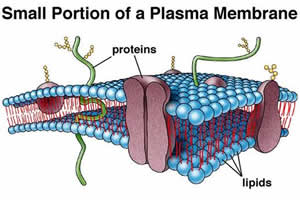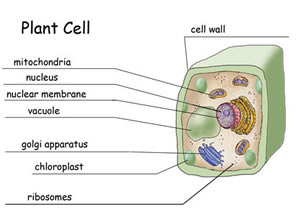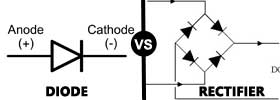Difference between Plasma Membrane and Cell Wall
Key Difference: The plasma membrane is essentially a barrier that separates the interior of the cells from the outside environment. Plasma membrane is also known as a cell membrane. The cell wall is a tough layer, which may be rigid or flexible depending on the type, and surrounds the entire cell. The cell wall resides outside of the cell membrane, but only in plant, bacteria, fungi, algae, and some archaea.

The plasma membrane and cell wall are two integral parts of the cell. Cells are the smallest unit of life and are microscopic in nature, which means that they can’t be seen with the naked eye. Cells were discovered in 1665 by Robert Hooke and were named for the small “cells” (rooms) in a monastery. There are two types of cells, the prokaryotic cells and the eukaryotic cells. The prokaryotic cells are self-sufficient in nature, such as bacteria and archaea. On the other hand, the cells of all multi-cellular beings are eukaryotic cells. Both the animal cells and plant cells are eukaryotic cells, but they have different structures.
The plasma membrane is essentially a barrier that separates the interior of the cells from the outside environment. Plasma membrane is also known as a cell membrane. Plasma membranes are present in all kinds of cells, including both animal and plant cells. The main function of a cell membrane is to regulate what enters and exits the cell. The cell membrane also gives a loose shape to the cell and ensures that parts of the cell do not flow away from the cell.
The cell membrane consists of a thin layer of amphipathic phospholipids. It is made up of lipid bilayers, which is essentially two layers of lipids, also known as fats. These phospholipids arrange themselves in such a way that their ‘hydrophobic tails,’ which is essentially the part that avoids water, is sandwiched between the ‘hydrophilic head’ regions, the parts that love water. This allows the membrane to act as a shield to regulate water intake. The hydrophilic head region keeps the water molecules close to itself, while the hydrophobic tails do not allow for easy transfer from one side of the hydrophilic head to the other. The phospholipids also contain embedded proteins that do allow certain objects, such as nutrients to enter and waste to exit the cell, as and when required.
Furthermore, cell membranes are also involved in conduction, cell-to-cell communication and cell signaling. The cell membrane also participates in phagocytosis (cell eating) and pinocytosis (cell drinking), by allowing what can and cannot enter the cell to be eaten or drunk. The cell membrane also plays an active part in communicating with other cells to identify cells that might die soon. Additionally, it is the cell membrane that allows one cell to stick to another, which sticks to another, and hence form groups of cells, also known as tissues.
 The cell wall, on the other hand, is not found animal cells or in protozoa. Cell walls are only present in plant cells, as well as in bacteria, fungi, algae, and some archaea. The cell wall is an integral part of these cells as it is essentially what its name suggests, a wall surrounding the cell. The cell wall is a tough layer, which may be rigid or flexible depending on the type, and surrounds the entire cell. The cell wall resides outside of the cell membrane.
The cell wall, on the other hand, is not found animal cells or in protozoa. Cell walls are only present in plant cells, as well as in bacteria, fungi, algae, and some archaea. The cell wall is an integral part of these cells as it is essentially what its name suggests, a wall surrounding the cell. The cell wall is a tough layer, which may be rigid or flexible depending on the type, and surrounds the entire cell. The cell wall resides outside of the cell membrane.
In plants, the cell wall is made up of cellulose, whereas in bacteria, fungi, algae, and archaea, the cell walls are made up of peptidoglycan, glucosamine polymer chitin, glycoproteins and polysaccharides, and of glycoprotein S-layers, pseudopeptidoglycan, or polysaccharides, respectively.
The main purpose of a cell wall is to provide protection and shape to a cell. The cell wall gives the cell rigidity, which allows the cells to hold their shape even under pressure, and especially when there is a lack of or excess of water in the cell. This rigidity is also what allows plants to keep its shape and grow up to great heights, as a number of trees do.
In addition to the cell membrane, the cell wall is also responsible for what can enter and exit a cell. The cell wall stops all transference between the inside and the outside of the cell. However, the cell walls have some holes in it called plasmodesmata. These plasmodesmata are responsible for allowing nutrients to come in to the cell, the waste to exit, and ions to pass through. However, these holes also allow the cell to loose water, which is when the plants appear droopy and wilted, but the rigidity of the cell wall still allows the plant to keep its shape, which is why the plant doesn’t turn to mush and fall down.
Image Courtesy: plantcellbiology.masters.grkraj.org, exploringnature.org









Add new comment